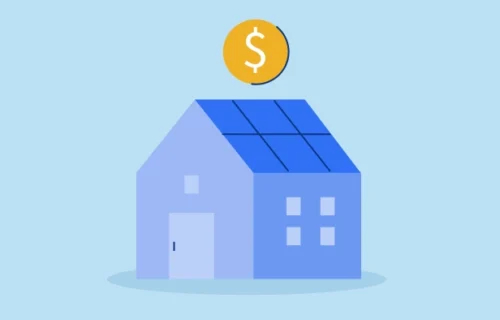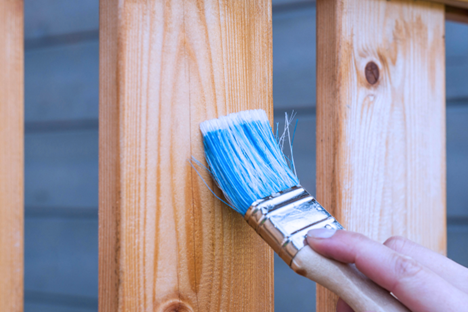
Connect with a Lima One expert today!
If you’d like to know more about this topic or see how it applies to your project, let’s talk.
Tips for a First-Time Flipper
5 Tips for a First-Time Flipper
The way a new investor approaches his or her early fix and flip investments will determine both the experience and financial success of the project. Follow these fundamental tips to make sure your renovation project is profitable in the end.
1. Recognize Opportunity
Learn how to spot a golden opportunity. Jumping in to purchase the first house you find without properly vetting it could lead to disaster, so it’s crucial that you carefully consider each potential property and run the numbers before making any offers.
Be on the lookout for homes in changing neighborhoods and areas that display signs of growth. If new restaurants, shops, schools, and housing developments are popping up around the property, that’s probably a good sign. However, be cautious of houses that date back further than the 1970s, as they often come with more risk factors based on their age and needed repairs.
Pay extra attention to flips that only in need of cosmetic renovations like new paint, replaced countertops, refinished flooring, etc. will lead to a simpler flip. If you can add value without major construction, electrical, or plumbing, you will reduce your risk and have a clearer path to profit. While the final gain may not be quite as big, the chances of finishing your flip profitably are much larger. That’s why steering clear of in-depth projects is often a wise decision for fix and flip enthusiasts who are just starting out. Start small, and work your way up to more advanced renovations, so you never bite off more than you can chew.
2. Research Properties
Once you identify a house that seems promising, consult with experts for additional opinions before signing on the dotted line. There’s nothing worse than buying a property only to find it’s got some fatal flaw.
Take advantage of free home inspections if they’re available in your area. If not, it’s best to invest in one anyway; that way, you won’t discover expensive issues like mold, a cracked foundation, or water damage halfway through renovations. You may also ask a veteran real estate investor in your area to do a drive-by and see if any issues stick out, and also ask a friendly real-estate agent to run comps in the area.
The goal here is to do enough due diligence to avoid high-dollar repairs or long times on market—two factors that will eat away your profit margins. These ditches catch many inexperienced fix-and-flip investors, but you don’t have to fall into the trap.
3. Raise Capital
Committing to a fix and flip property is all about earning a return on your investment by bettering a property that has problems but also potential. Doing this requires a lot of up-front capital. There are purchases to be closed, materials to be bought, and contractors to be paid. And all of those things take money.
Luckily, Lima One Capital is available to relieve some of these financial stresses. We exist as an alternative to big banks, hard money lenders, and private investors. Our many flexible programs (including our FixNFlip program) allow you to choose the financing options that best suit your specific needs.
It’s an industry-leading fix-and-flip funding option, but it doesn’t cover everything. You still need to have cash reserves on hand to close the loan and keep your project moving. Lima One Capital requires these reserves because we’ve seen time and time again that they’re essential to a successful flip. We offer a team of qualified consultants dedicated to helping you achieve your fix and flip goals, with competitive rates plus efficient underwriting and construction management support that you won’t find anywhere else.
4. Choose Contractors
After you’ve secured enough financing for your flip, you’ll want to start choosing contractors. Even fix and flip veterans can’t do everything themselves, and as someone who’s new to the game, it’s best for you to admit which renovation aspects fall outside your realm of expertise.
Avoid the trap of trying to cut costs by refusing to hire professional help or by going with the cheapest contractor just because of price. Consult online comparison sites for customer reviews and feedback that will help you find the most qualified, affordable services, or ask other investors in your area for recommendations.
Be mindful that the quality of your contractors’ work will affect the overall sales value of your home Being diligent and hiring contractors you know you can trust will save time, energy, and financial resources in the long haul, so don’t be afraid to go for experts. Quality is worth the money.
5. Develop A Sales Plan
Once rehab construction is done, it’s time to reap your profits through your final sale. Spread the word about your fix and flip project anywhere you can, from sites like Zillow to social media. Get great photos that feature the property. Again, this is an area where a real estate agent can help. This local expert will know how to talk about your home and the amenities of its immediate community.
When it’s time for showings, give your fix and flip one last facelift. Make sure it’s neatly kept, and consider staging it with rented furniture. You want visitors to be able to envision the space as a comfortable place to live. Landscaping, great lighting, and other relatively inexpensive touches make your home that much more appealing.
Takeaway
Closing day—and the check that comes with it—is just around the corner if you follow these tips and recognize opportunity, do your research, raise sufficient capital, choose contractors wisely,and develop a sales plan.
No home renovation journey is perfect. You will inevitably face some setbacks and obstacles; however, following these guidelines and finding committed partners such as Lima One Capital will set you up for a rewarding and profitable fix and flip investment experience.
Subscribe for More Insights
Get the latest industry news & Lima One updates.









